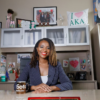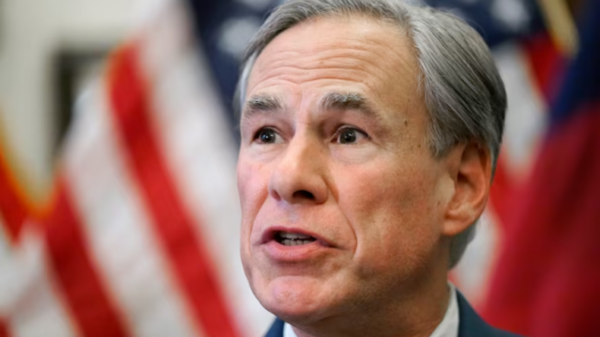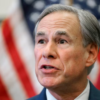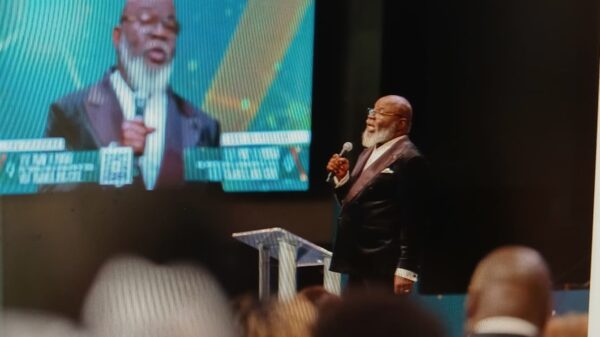
Last week, Coppell became the latest North Texas school district to pass a mask mandate that allowed for parental opt-outs, granting exemptions based on medical, religious or philosophical objections.
It’s a move that two larger Dallas-area districts — Plano and Garland — also adopted in recent weeks as school boards across the state grapple with how best to address the current surge in COVID-19 cases, while being mindful of Gov. Greg Abbott’s court fights with districts that have defied his ban on mask mandates.
In Plano, close to 8% of its students — roughly 3,800 students — opted out. Garland saw 2% of students — about 1,200 students — choose not to wear masks. Coppell’s numbers will be available after Labor Day, district officials said.
Districts say they are doing their best to balance the wide spectrum of parents’ concerns with the recommendations of health experts. But how much do opt-outs affect the efficacy of mask mandates?
As with many questions in public health, it’s a matter of degrees.
On the macro level, the medical community knows a lot about respiratory illnesses, and that masking works against them.
Dr. Jeffrey Kahn, chief of infectious diseases at Children’s Health and professor at UT Southwestern, said he finds the current debate on mask efficacy “baffling.”
“We’ve been using masks for over a century, and we know that they work,” he said. “Even though SARS-CoV-2, which is the cause of COVID, is a new virus, its biophysical properties are the same as many of the other respiratory viruses. And the way that we control these other respiratory viruses — certainly in a hospital setting — is to wear a mask.”
To that end, there is a large and growing body of evidence that masks have a significant impact on slowing community spread of COVID-19. When worn correctly, masks not only reduce the emission of droplets potentially containing the virus, but also provide some protection to the wearer.
But when asking more specific questions, such as if masks are more effective than other measures in school settings, the data become more scarce. In fact, there is a paucity of research — 18 months into the pandemic — on masks’ effectiveness within schools.
“All of the studies that I have seen are not sufficiently rigorous to assess the actual effectiveness of masks” in schools, Tulane University epidemiologist Susan Hassig told Chalkbeat’s Matt Barnum in a recent review of current research.
Kahn said that of the existing studies, most lack a control group. The research does not compare similar schools in similar areas with different masking requirements, and therefore has difficulty accounting for various mitigation efforts in place at those schools.
To add to the confusion, recommendations from the United States’ leading medical authorities — such as the Centers for Disease Control and Prevention and the American Academy of Pediatrics — differ from those of their international counterparts.
While the CDC and AAP recommend indoor masking for those 2 and older, regardless of vaccination status, the World Health Organization’s interim guidance states that those under 5 should not wear masks in school settings for “source control.” The WHO’s rationale is that by age 5, students should have the manual dexterity and fine motor skills needed to “appropriately use a mask with minimal assistance.”
For those between 6 and 12 years old, “a risk-based approach should be taken, considering community transmission levels, ability to maintain physical distancing and ventilation,” the WHO’s European technical advisory group wrote in June.
If the data on risk-mitigation strategies in schools is “sparse,” as the WHO’s group described it, what’s the right approach?
That’s a tension that public health experts have long battled with: balancing the practice with the research, said Dr. Diana Cervantes, director of the Masters of Public Health Epidemiology program at the University of North Texas Health Science Center at Fort Worth.
“The practice is, you always implement prevention and control measures immediately to prevent as much disease as possible,” she said. “And you go based on historically what you know, and what you’ve seen, and you do that because your job is to stop people from getting sick.”
Research, on the other hand, is backward-looking, examining which measures work in a quantitative way, she said.
Both Cervantes and Kahn note that masks are just one in a series of layered approaches that communities can take to minimize the spread of the coronavirus.
For Kahn, masks are a cost-effective and efficient method of control, whose efficacy is diminished if everyone isn’t on board.
“If we have a substantial proportion of people not wearing masks, this is going to allow for the virus to spread,” he said. “… We have to have everybody in it to get this to work and work well. It seems to me that if you have an optional mandate, we really don’t have a mandate at all.”
For Cervantes, a mandate with an opt-out is a practical approach — and better than nothing.
“You do have to, in a way, work both sides,” she said. “You can’t always force people to do everything you want.
At Coppell’s emergency school board meeting on Aug. 30, similar to countless others held across the county in recent weeks, parents on both sides of the mask debate pleaded with school trustees about how the district’s policy should be revised.
Prior to the meeting, Coppell had altered its mask policy twice over the past month, first based on Dallas County Judge Clay Jenkins’ order requiring masks, then making them optional again after the Texas Supreme Court issued a stay on Jenkins’ ruling.
In a letter to parents issued after the vote, superintendent Brad Hunt said that because of the current lawsuits and orders, the district’s legal counsel advised that “a mask requirement best lay in the hands of the locally elected CISD Board of Trustees.”
Similarly, Garland’s board president, Jamie Miller, said his district’s temporary mask requirement was made in effort to comply with the governor’s order and pending litigation.
“This is not a mandate,” Miller said. “There is no penalty for non-compliance. Our goal is to follow the law and to keep our students and teachers in class and safe.”
Plano’s board president did not immediately respond to a request for comment on why they considered opt-out mask policies.
All but two of the dozen parents who spoke at the Coppell meeting were in favor of a universal mask mandate, including a pediatric specialist, an emergency room doctor, an infectious diseases physician and a nurse at the district’s New Tech High School.
Hunt added in his letter that the district had received thousands of messages on masks, and “we hear and take all of these messages to heart.”
“I think it is unfortunate that our school district, especially our teachers and children, has been caught in the middle of what has become a political battle,” he wrote. “Our children shouldn’t be pawns in this legal issue and decisions about health and safety should override any political stances.”
After a motion was made by trustee Manish Sethi asking for an opt-out policy, only one board member, Tracy Fisher, offered any pushback.
Fisher tried to tie Coppell’s temporary mandate to COVID-19 case counts in Dallas County, requiring masks when there are 10 cases per 100,000, the county’s current threshold to be at its highest risk level. She also tried to remove philosophical objections from the new policy.
Neither amendment found any support. The board eventually approved the opt-out mandate on a 6-0 vote, with one abstention.
“There’s more homework that needs to be done,” Sethi said.
The DMN Education Lab deepens the coverage and conversation about urgent education issues critical to the future of North Texas.
The DMN Education Lab is a community-funded journalism initiative, with support from The Beck Group, Bobby and Lottye Lyle, Communities Foundation of Texas, The Dallas Foundation, Dallas Regional Chamber, Deedie Rose, The Meadows Foundation, Solutions Journalism Network, Southern Methodist University and Todd A. Williams Family Foundation. The Dallas Morning News retains full editorial control of the Education Lab’s journalism.









You must be logged in to post a comment Login